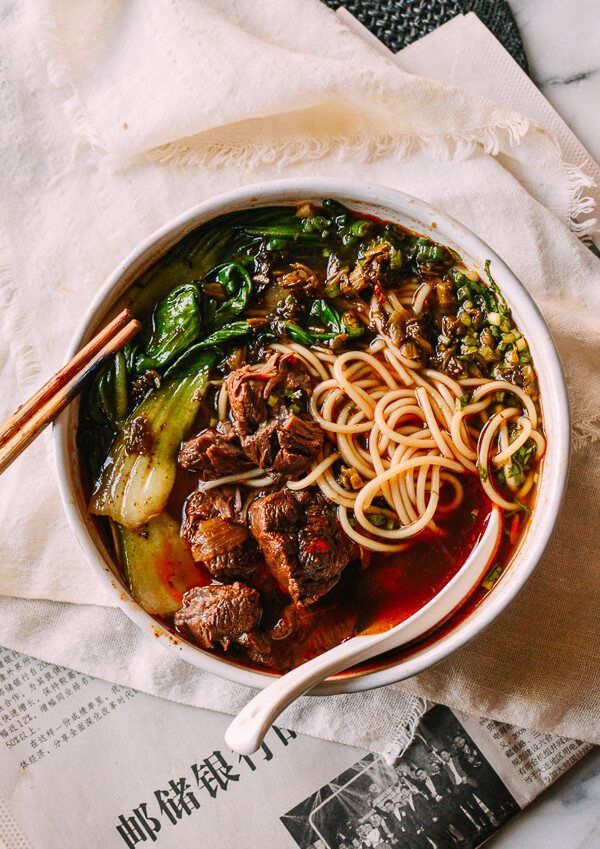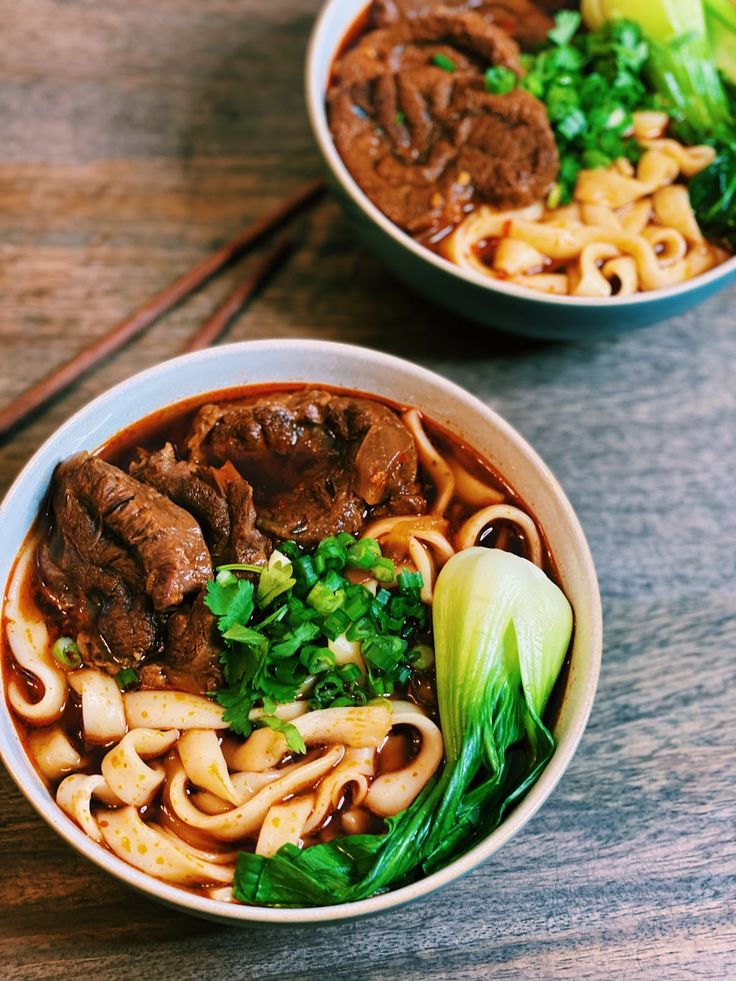Introduction
Taiwanese Beef Noodle Soup is a comforting and flavorful dish made with tender braised beef in a delicious broth. Commonly garnished with green onions, bok choy, and pickled vegetables, this dish is a favorite in Taiwan and around the world. The rich flavors and hearty ingredients make it a popular choice for those looking for a satisfying and warming meal. Below is an appetizing image of Taiwanese Beef Noodle Soup to give you a sneak peek at this delectable dish.
Cooking Tips
Here are some cooking tips to help you achieve tender beef and a rich broth by adjusting water levels for proper braising:
- When braising beef, make sure the water level is just enough to cover the meat.
- Maintain a gentle simmer throughout the braising process to ensure the beef becomes tender.
- Add more water if it evaporates too quickly during cooking to keep the beef moist.
- Adjust the seasoning of the broth as needed to enhance the flavor of the beef.
- Allow the beef to rest in the broth after cooking to absorb more flavor and become even more tender.

Fixing Broth Issues
Fixing Diluted Broth
If you find yourself with a pot of diluted broth, don’t worry, it can be fixed easily. Simply place the pot over high heat and let it simmer. As the broth simmers, the excess water will evaporate, leaving you with a more concentrated and flavorful broth. Keep an eye on it and taste it occasionally until you reach the desired flavor.
- Keywords: Diluted broth, fixing, reducing, high heat
- Entities: Broth
Fixing Salty Broth
In case your broth turns out too salty, there’s a simple solution to balance it out. Add boiling water to the salty broth gradually while tasting in between. This will help dilute the saltiness and bring the flavors back to a well-balanced level. Adjust the seasoning as needed until you achieve the perfect taste.
- Keywords: Salty broth, fixing, adjusting, boiling water
- Entities: Broth, water
Key Ingredients
Chili Bean Paste
Chili bean paste is a crucial ingredient in Taiwanese Beef Noodle Soup as it acts as a flavor enhancer, adding a unique and spicy kick to the dish. The rich and savory taste of chili bean paste complements the other ingredients, creating a delicious and aromatic broth that is characteristic of this traditional Taiwanese dish.
Beef Cuts
When preparing Taiwanese Beef Noodle Soup, it is recommended to use specific beef cuts to enhance the overall flavor and texture of the dish. Some of the recommended beef cuts include brisket, shank, and flank, as they add depth and richness to the soup. Choosing the right beef cuts is essential to achieving the authentic taste of this classic Taiwanese dish.

Aromatics
Common Aromatics
Aromatics are essential ingredients that add flavor and depth to dishes. Common aromatics used in cooking include onions, garlic, celery, and carrots. These ingredients are often sautéed at the beginning of a recipe to build a solid flavor base for the dish. Onions provide a sweet and savory note, while garlic adds a pungent flavor. Celery and carrots contribute earthy and sweet undertones, respectively. Combining these aromatics creates a rich foundation for various culinary creations.
Additional Aromatics Suggestions
In addition to the classic aromatics, consider incorporating herbs like thyme, rosemary, and bay leaves for added depth and complexity. Spices such as whole peppercorns, cloves, and cinnamon sticks can elevate the flavor profile of your dishes. Experimenting with different aromatics allows you to tailor the taste of your meals to suit your preferences. Don’t be afraid to try new combinations to discover unique and delicious flavor profiles.
Noodles
Recommended Noodle Type
When making a delicious noodle dish, it is essential to choose the right type of noodles and cook them separately to achieve the best results. Here are some ideal noodle types to consider:
- Egg noodles: Ideal for soups and stir-fries as they have a soft texture.
- Rice noodles: Great for dishes like Pad Thai, gluten-free and quick to cook.
- Udon noodles: Perfect for Japanese dishes like udon soup or stir-fries; they have a chewy texture.
Cooking these noodles separately is crucial to maintain their individual textures and prevent them from becoming mushy or sticky.
Cooking Noodles Separately
Cooking noodles separately involves a simple process that ensures optimal texture and flavor for your dish. Follow these steps for the best results:
- Boil water: Bring a pot of water to a rolling boil.
- Add noodles: Gently add the noodles to the boiling water.
- Cook noodles: Cook according to package instructions until they reach the desired texture.
- Drain and rinse: Once cooked, drain the noodles and rinse them with cold water to stop the cooking process.
- Use as needed: Add the cooked noodles to your dish as needed, ensuring they maintain their ideal texture.
Final Thoughts
Experimenting with enhancing your noodle soup can lead to exciting flavor combinations and a truly satisfying meal experience. Whether it’s adding different spices, vegetables, or proteins, don’t be afraid to get creative in the kitchen. If you enjoyed this Taiwanese Beef Noodle Soup recipe, stay tuned for more delicious noodle recipes coming your way. Happy cooking!
- Try adding a splash of soy sauce or a sprinkle of chili flakes to your next bowl of noodle soup.
- Consider incorporating fresh herbs like cilantro or Thai basil for a burst of freshness.
- Keep exploring new recipes and ingredients to elevate your noodle soup game.
FAQs:
How do I adjust water levels when making Taiwanese Beef Noodle Soup?
You can adjust the water levels by adding more water if the soup is too thick or simmering longer to reduce the liquid if it’s too watery.
What are the key ingredients that give Taiwanese Beef Noodle Soup its unique flavor?
The key ingredients that give Taiwanese Beef Noodle Soup its unique flavor are star anise, soy sauce, rock sugar, and Sichuan peppercorns.
Can I substitute chili bean paste in Taiwanese Beef Noodle Soup?
Yes, you can substitute chili bean paste with Korean gochujang or miso paste for a different flavor profile.
Why is it important to cook noodles separately for this dish?
It is important to cook noodles separately to prevent them from becoming mushy and absorbing all the broth’s liquid.
Are there variations of Taiwanese Beef Noodle Soup recipes to try?
Yes, there are variations of Taiwanese Beef Noodle Soup recipes to try, such as spicy beef noodle soup, clear broth beef noodle soup, and tomato-based beef noodle soup.